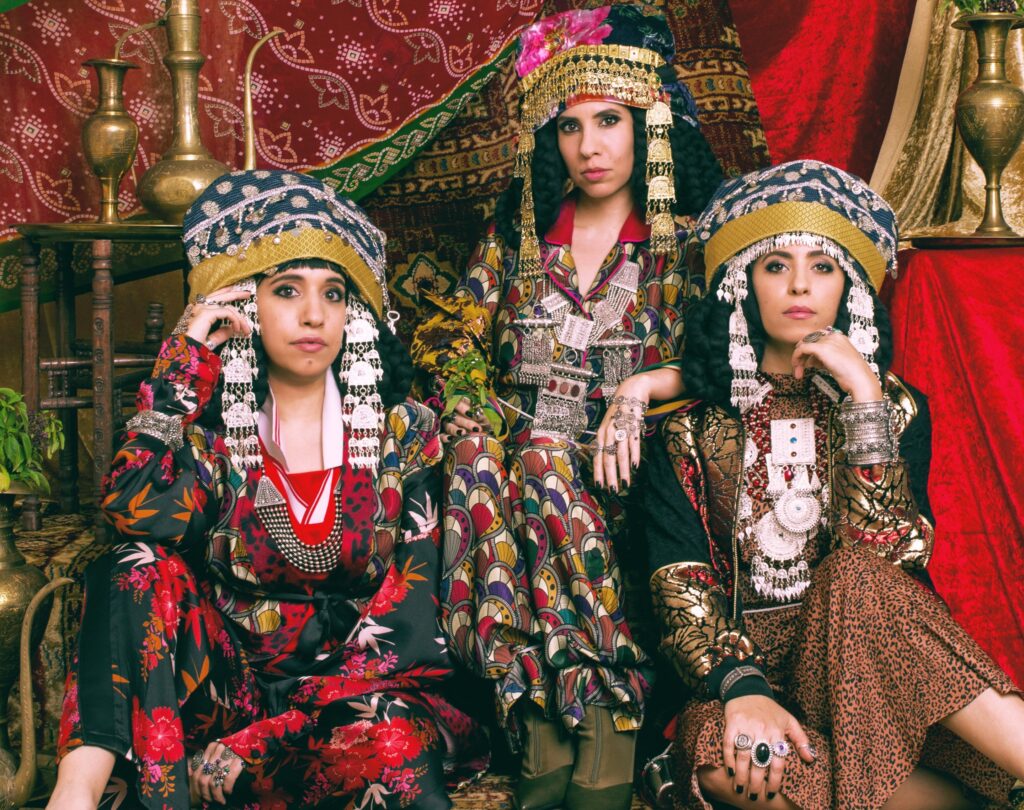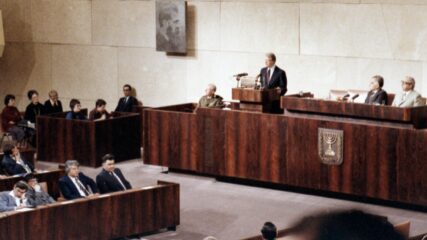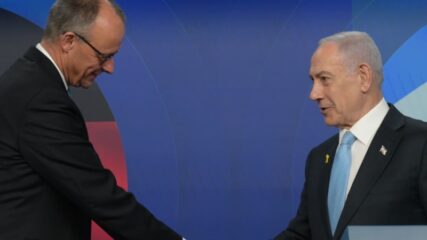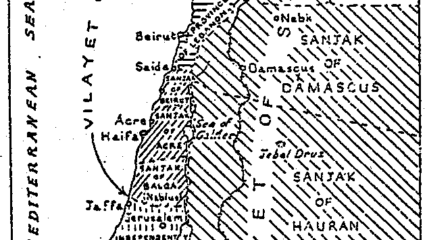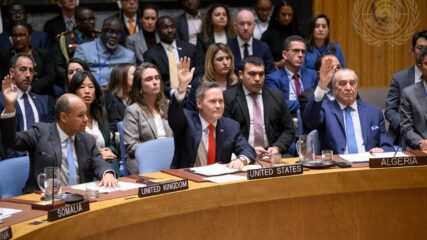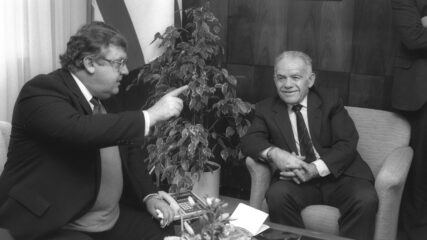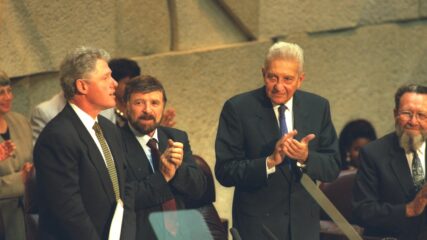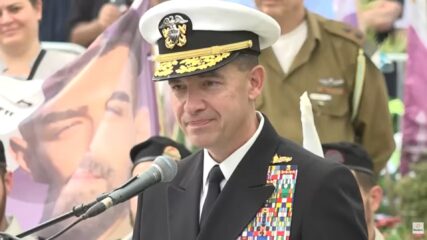Dr. Eli Sperling, April 15, 2025, for CIE
© Center for Israel Education, 2025
Israeli music offers a powerful lens through which we can understand the country’s cultural and political evolution, serving as both a unifying force and a reflection of its diverse society and complex history. From the early Zionist period until the founding of the state, music acted as a Hebrew cultural bonding agent and played a central role in shaping what would become Israeli national identity and culture through pioneer songs, melodies and dances celebrating labor, sacrifice and Jewish national connection to the Land of Israel. After 1948, Israeli music served as a vehicle for cultural, political, religious and social expression — celebrating Israel’s many triumphs, rallying support during war, commemorating collective loss, defining Judaism in the Jewish state, voicing protest and so much more.
This evolving musical cannon also reveals Israel’s challenges of cultural integration, as the marginalization and later embrace of Mizrahi, African and other immigrant groups’ musical traditions mirrored broader struggles over national and cultural belonging. As Israeli music has continued to absorb global influences and reimagine regional sounds, it has continued to reflect the state’s evolving society, shifting values, complex regional and domestic politics, and relationships with the Jewish Diaspora. In doing so, Israeli music not only captures the evolving soundscape of the Jewish state, but also tells the deeper story of Zionism, Israeli culture and the ongoing negotiation of what it means to be Israeli.
The following collection offers a diverse sample of 75 Hebrew and Israeli songs from the 19th century to the present, unfolding the story of Israel’s rich history and present realities after more than 75 years of statehood.
1. “Hatikvah” — 1880
Writers: Naftali Herz Imber (lyrics), Samuel Cohen (music)
“The Hope” serves as Israel’s national anthem — and before 1948, the Zionist anthem — representing the aspiration for a Jewish return to Zion and the establishment of a Jewish homeland. It remains Israel’s most enduring musical symbol of national identity.
More videos: Israel’s founding to present; Three Cantors
2. “Hava Nagila” — c. 1918
Writer: Abraham Zevi Idelsohn
This iconic Jewish folk song celebrates joy and collective celebration with roots in Eastern European Hasidic melody. It has become a universal symbol of Jewish identity and Israeli pride across the Diaspora.
3. “Hevenu Shalom Aleichem” — 1920s
Writer: Traditional/folk
This simple yet powerful chant means “We brought peace upon you” and is a staple of Jewish and Israeli celebrations. It captures early Zionist optimism and a Jewish desire for peace.
4. “Zum Gali Gali” — 1930s
Writer: Kibbutz folk song
This rhythmic labor song is associated with labor on the kibbutz and reflects the collectivist spirit of early Zionist pioneers. Its repetitive melody and strong beat made it popular among Zionists worldwide.
5. “Artza Alinu” — 1932
Writers: Early Zionist pioneers
This song expresses the determination and fervor of Jewish immigration to Palestine. It expresses the deepening national and ideological drive of the Second and Third Aliyot.
6. “Anu Olim Artza” — 1934
Writer: Early Zionist pioneers
This pioneering song emphasized the idea of a collective return to the homeland. It became a staple in Zionist youth movements to inspire commitment and action.
7. “Shir Ha-Emek” — 1934
Writers: Natan Alterman (lyrics), Daniel Sambursky (music)
This anthem to the Jezreel Valley became a standard of pioneer-era music, focusing on agricultural labor and connection to the Land of Israel. The song combines practical settlement themes with Zionist ideals in a way that resonated with early settlers.
8. “Shir HaPalmach” — 1941
Writer: Gilad Zerubavel
This song became the unofficial anthem of the Palmach, the Haganah’s elite fighting force. It reflects the valor and camaraderie of pre-state military pioneers.
9. “Tzena Tzena” — 1941
Writer: Issachar Miron
This tune was the first Hebrew song to chart in the United States. Its upbeat tempo and celebration of women in uniform made it a postwar favorite.
10. “Hechalil” — 1945
Writer: Leah Goldberg
This art song combines European classical influences with Hebrew poetry, showing the more introspective side of Yishuv music. It deals with themes of longing and cultural continuity in a distinctly pre-state style.
11. “Kol Dodi” — 1947
Writer: Sara Levi-Tanai
Performer: Shoshana Damari
The tune was composed in 1947 as both a song and folk dance. Its success launched a genre of slow, Yemenite-inspired dance songs marked by biblically themed lyrics, Eastern melodies, and simple and danceable rhythmic structures.
12. “Hayu Zmanim” — 1940s
Writer: Haim Hefer
This nostalgic look back at early Yishuv life captures unity and collective memory. It bridges idealism with the growing complexity of statehood.
13. “Bab El Wad” — 1949
Writer: Haim Gouri
This somber tribute honors those who died in the battles for Jerusalem during the 1948 war. It is performed each year on Yom HaZikaron, with an emotional weight that resonates deeply in Israeli memory.
14. “Shir HaRe’ut” — 1949
Writer: Haim Gouri
The tune commemorates fallen soldiers and is also deeply tied to Yom HaZikaron. Its somber melody and lyrics convey grief, unity and remembrance.
15. “Shalom L’Ben Dodi” — 1950s
Writer/performer: Joe Amar
This groundbreaking song blends Moroccan Jewish liturgical music with modern Middle Eastern sounds, introducing North African traditions to mainstream Israeli culture. Amar’s distinctive style helped establish Mizrahi music as a part of Israel’s cultural landscape.
16. “HaFinjan” — 1953
Writer: Haim Hefer
The song evokes the image of Israeli pioneers gathering around a fire after a hard day’s work, singing, relaxing and sharing coffee made in a finjan, a Middle Eastern coffee pot. Its catchy melody and nostalgic lyrics helped it become an iconic Hebrew song, embraced both in Israel and by Jewish communities in the United States, symbolizing Zionist camaraderie and the pioneering spirit.
17. “Hu Lo Yada Et Shema” — 1954
Writer: Haim Hefer
This emotional ballad tells of a fleeting wartime romance between a soldier and nurse who meet briefly before he dies in battle. It captures key themes of Israel’s War of Independence: youth cut short, thwarted expectations and the human cost of nation-building.
18. “Hora Mamtera” — 1955
Writers: Yehiel Mohar (lyrics), Moshe Wilensky (music)
Performer: Shoshana Damari
This song celebrates Israel’s early efforts to “make the desert bloom” by channeling water to the Negev. It exemplifies the Israeli folk tradition that combined European musical structures with Middle Eastern rhythms.
19. “Erev Shel Shoshanim” — 1957
Writers: Yosef Hadar (music), Moshe Dor (lyrics)
This romantic ballad with Middle Eastern instrumentation became an Israeli classic and international favorite. Its poetic imagery of a “night of roses” has made it a wedding staple in Israel.
20. “Mashi’ach Ha-Zaken” — 1964
Writer: Nurit Hirsch
This satirical song from the acclaimed film Sallah Shabati critiques early immigrant absorption policies. It marked a turning point toward Mizrahi representation in mainstream Israeli culture.
21. “Zemer Noga” — 1967
Writer: Rachel Bluwstein (poem), Shmulik Kraus (music)
Performers: Ha’Halonot Ha’Gevohim
This pop hit was first performed by The High Windows, a trio featuring Kraus, Arik Einstein and Josie Katz. Their upbeat, modern arrangement introduced Bluwstein’s sorrowful poem to a new generation, blending poetry with Israeli pop.
22. “Yerushalayim Shel Zahav” — 1967
Writer: Naomi Shemer
Written just before the Six-Day War, “Jerusalem of Gold” became an unofficial national anthem. It reflects longing for and triumph in the city’s reunification.
23. “Nasser Mechake LeRabin” — May 1967
Writers: Folk/popular
This defiant song emerged as a response to Egyptian President Gamal Abdel Nasser’s threats toward IDF Chief of Staff Yitzhak Rabin before the Six-Day War. Its taunting lyrics exemplify how Israelis used humor to cope with existential fear during one of Israel’s most precarious moments.
24. “Machar” (“Tomorrow”) — June 1967
Writer: Naomi Shemer
This victory song emerged after the Six-Day War with its modest refrain: “Tomorrow a thousand housing projects will arise.” Despite being created at the peak of military triumph, it focuses on practical development rather than empire-building, revealing many Israelis’ pragmatic priorities postwar.
25. “Yerushalayim Shel Barzel” (“Jerusalem of Iron”) — 1967
Writer/Performer: Meir Ariel
This counterpoint to “Jerusalem of Gold” was written by a paratrooper who fought in Jerusalem and offers a raw perspective on the city as one of “blood and wounds.” Despite its focus on the war’s costs, the song concludes affirmatively about liberation, establishing Meir Ariel as a voice of nuanced Israeli patriotism.
26. “Zug O Peret” — 1968
Writer: Yehuda Ofen
Performer: Aris San
This hit blends Greek bouzouki rhythms with Israeli pop, helping shape early Mizrahi music. The song became a staple in Israeli folk dance and highlights the Mediterranean influences that began to transform Israeli musical culture in the 1960s.
27. “Shir LaShalom” — 1969
Writer: Yaakov Rotblit
This anti-war anthem urges Israelis to seek peace over militarism and gained tragic significance when found in Yitzhak Rabin’s pocket after his 1995 assassination. Its message remains relevant in Israeli political discourse today.
28. “Noladeti Lashalom” — 1969
Writer: Uzi Hitman
Performer: Yehoram Gaon
This ballad, with its declaration “I was born for peace,” gained significance during the War of Attrition, which followed the June 1967 war. Gaon’s performance helped make it a notable song in discussions about Israel’s relationship with peace.
29. “Love’s a Growing Thing” — 1969
Performers: The Lions of Judea
The Lions of Judea, one of Israel’s best-known 1960s bands, began by covering British and American hits before recording this psychedelic single in London for Fontana Records. Band member and future media mogul Haim Saban went from a barely known guitar player to an international rock performer.
30. “Habalada al Yoel Moshe Salomon” — 1970
Writer/performer: Arik Einstein
The song recounts the founding of Petah Tikvah near the Arab village of Mulabbis. It sparked controversy over questions of its historical accuracy and was an example of how Israeli popular music reflected diverse national sentiments post-1967.
31. “Ani V’Ata” (“Me and You”) — 1971
Writer/performer: Arik Einstein
This beloved duet with Miki Gavrielov captures a hopeful vision of friendship and shared purpose in changing the world. It exemplifies Einstein’s unparalleled influence on Israeli musical culture as rock influences penetrated Israel in the 1970s.
32. “Yo Ya” — 1973
Writer/performer: Kaveret
This track from Kaveret’s debut album, “Poogy Tales,” provided emotional relief for Israelis processing the trauma of the Yom Kippur War. The band incorporated Israeli idioms and cultural references, demonstrating music’s power to brighten dark national moments.
33. “Lu Yehi” — 1973
Writer/composer: Naomi Shemer
This song became an emotional cry for hope and peace during the Yom Kippur War. The moving lyrics expressed national longing during a time of great uncertainty and grief.
34. “Pitom Kam Adam” — 1973
Writers: Amir Gilboa (lyrics), Gidi Koren and Shlomo Artzi (music)
Performer: Shlomo Artzi
This song portrays an individual’s discovery or rediscovery of national identity. Artzi’s performance helped influence how Israeli music addressed themes of national consciousness in the years that followed.
35. “Natati La Khayay” — 1974
Writer/performer: Kaveret
This tune presented romantic and political themes and was Israel’s 1974 Eurovision entry, becoming a national hit and later being covered in several languages. It inspired a musical at Habima Theatre and sparked debate years later when Sarit Hadad’s cover reignited tensions over style, ethnicity and cultural ownership.
36. “At Va’Ani” — 1975
Writers: Ehud Manor (lyrics), Shlomo Artzi (music/performer)
This romantic ballad represented Israel at the 1975 Eurovision Song Contest, establishing Israel as a serious competitor in the European musical arena. Artzi’s charismatic performance helped launch his career while showcasing the growing international character and appeal of Israeli pop.
37. “HaYaldah Hachi Yafah Bagan” — 1975
Writers: Yehonatan Geffen (lyrics), Yoni Rechter (music)
This playful song about childhood and innocence became an Israeli classic performed by Yehoram Gaon. Its delicate melody and poetic lyrics exemplify the often-sophisticated children’s music that became a distinctive genre in Israeli culture.
38. “Od Lo Ahavti Dai” — 1976
Writer/composer: Naomi Shemer
Performer: Yehoram Gaon
This song reflects both personal resilience and collective Israeli ethos, blending themes of unfulfilled aspirations with defiant perseverance. Its enduring legacy lies in its ability to symbolize the pursuit of purpose and the intertwining of individual and national identities in Israel.
39. “Adam Betoch Atzmo” — 1977
Writer/performer: Shalom Hanoch
Hanoch’s 1977 album, A Man Within Himself, was important in the development of Israeli rock. It addressed post-Yom Kippur War feelings of isolation and disillusionment and mixed rock, blues and Middle Eastern sounds with a minimalist approach that influenced many artists.
40. “Atur Mitzchech” — 1977
Writer: Avraham Halfi
Performer: Arik Einstein
Poet Halfi wrote this song in 1950s Tel Aviv about his unfulfilled passion for Zehava Berlinsky, the wife of a friend. When Einstein released the song in 1977, it brought Halfi lasting recognition, though the woman’s identity remained secret until her death in 2011, when the song was played at her funeral and the poem engraved on her headstone.
41. “Yihiyeh Tov” — 1978
Writers: David Broza (music), Yehonatan Gefen (lyrics)
This optimistic anthem became one of Israel’s most beloved peace songs during a period of significant political change. Broza’s composition gained deeper resonance after the Rabin assassination when he added a verse incorporating “Od Lo Avda Hatikvah” (our hope is not yet lost) from Israel’s national anthem.
42. “A-Ba-Ni-Bi” — 1978
Writers: Ehud Manor (lyrics), Nurit Hirsch (music)
Israel’s first Eurovision victory in 1978 used the playful childhood “B language” (adding “b” after each syllable) to charm international audiences. The song marked a pivotal moment in Israeli cultural history, establishing the country as a serious contender in the world of European popular music.
43. “Yeledim Ze’Simcha” — 1979
Writer/performer: Ha’Brira Ha’Tiv’it
This humorous song ironically juxtaposes the refrain “children are joy” with lyrics cataloging the chaos and exhaustion of parenthood. Its enduring popularity stems from how it gently critiques societal pressure for large families in the Mizrahi community while acknowledging the genuine warmth of Israeli family life.
44. “Al Kol Eleh” — 1980
Writer/composer: Naomi Shemer
This song initially appears as a simple prayer but reveals deeper layers of personal and national identity. It expresses the Jewish desire to protect loved ones while acknowledging hardship and seeking grace to accept both good and bad.
45. “Haperach Begani” — 1982
Writer/performer: Zohar Argov
“The Flower in My Garden” won first place at the 1982 Mizrahi Song Festival and gained immense popularity among soldiers during the First Lebanon War. This breakthrough hit elevated Mizrahi music from relative cultural marginalization to mainstream acceptance and established Argov as “the king of Mizrahi music.”
46. “Im Nin’alu” — 1984
Writer/performer: Ofra Haza
This Hebrew poem by Rabbi Shalom Shabazi was put to music and recorded by Haza, then remixed for international release in 1988. The remix sold over 3 million copies worldwide and helped introduce Israel’s Middle Eastern sounds to Western pop music audiences.
47. “Mehakim LeMashiach” — 1985
Writer/performer: Shalom Hanoch
This beloved song captured Israel’s economic transition from socialism to capitalism, using the double meaning of Mashiach as both Messiah and a character’s name. With the refrain “Mashiach isn’t coming,” it wryly comments on Israel’s stock market collapse and disillusionment with get-rich-quick schemes.
48. “Anachnu Nish’arim Ba’aretz” — 1985
Writers/performers: Uzi Hitman and Yigal Bashan
This satirical song pokes fun at Israeli life, politics and Eurovision drama. Despite its humor, the song struck a chord with listeners and was named Israel’s Song of the Year in 1985.
49. “Elef Neshikot” — 1985
Writers: Mirit Shem-Or (lyrics), Zvika Pick (music)
Performer: Yehoram Gaon
This sweet love song traces its roots to the Ottoman era. Its lyrics were inspired by a letter from Avshalom Feinberg, a founder of the World War I-era Jewish underground movement Nili and often called “the first Sabra.”
50. “Ir Miklat” — 1986
Writer/performer: Ehud Banai
This song’s “city of refuge” symbolizes a space where individuals can find sanctuary but also isolation and estrangement. This view aligns with Banai’s career-long exploration of the human condition in a country experiencing political and social upheavals.
51. “Ein Li Eretz Acheret” — 1986
Writers: Ehud Manor (lyrics), Corinne Allal (music)
Written during political tension, this emotionally charged ballad expresses a complex patriotism acknowledging both love for Israel and criticism of its policies. The song became an unofficial national anthem that resonated across political divides.
52. “Had Gadya” — 1989
Writer/performer: Chava Alberstein
Alberstein transformed the concluding children’s song of the Passover seder into a controversial political critique. Her reinterpretation created a powerful statement on contemporary Israeli politics that resonated far beyond its traditional religious context.
53. “Achshav Meunan” — 1993
Writer/performer: Aviv Geffen
This nihilistic track became an anthem for young Israelis questioning the country’s militaristic ethos. The refrain “Anachnu dor mezuyan” (“we are a messed-up generation”) crystallized 1990s youth alienation and offered an outlet for those struggling with Israeli societal pressures.
54. “Al Ha’Ritzpah” — 1995
Writer/performer: Monica Sex
This song by iconic rock band Monica Sex explores emotional pain and degradation within toxic relationships, symbolized by the repeated phrase “on the floor.” Its raw, intense lyrics and powerful delivery have made it an iconic track in Israeli rock history, building on the grunge and rock scenes of the United States.
55. “Ma’aleh Avak” — 1995
Writer/performer: Koby Oz with Teapacks
This stinging criticism of the Israeli “development town” comes from a band who knew the subject intimately, being from the economically downtrodden, often-targeted southern town of Sderot. The song’s portrayal of life on Israel’s periphery challenged the mainstream narrative while giving voice to marginalized communities.
56. “Diva” — 1998
Writers: Svika Pick (music), Yoav Ginai (lyrics)
Performer: Dana International
This groundbreaking Eurovision winner brought international attention to Israel while challenging conservative attitudes toward gender identity. Dana International’s triumph marked a watershed moment for transgender representation, and the song reached the top 10 in multiple European countries.
57. “Yahad” — 1999
Writer/performer: Gaya
This heartfelt song, an expression of Israeli hopes for the Oslo peace process to continue, is about unity and peace, blending modern Hebrew lyrics with spiritual themes. With its uplifting melody and message of togetherness, it became a cultural anthem in Israel and Jewish communities worldwide.
58. “Salaam (Od Yavo Shalom Aleinu)” — 2001
Writer/performers: Mosh Ben-Ari & Sheva
This catchy song uses the word for peace in Hebrew and Arabic and became widely sung in Jewish camps and youth movements internationally. Its straightforward message about coexistence made it popular across different communities and age groups in Israel and beyond.
59. “Nadlik Beyakhad” — 2002
Writer/performer: Sarit Hadad
This powerful ballad represented Israel at the 2002 Eurovision Song Contest, showcasing Hadad’s aptitude for bridging Mizrahi traditions and contemporary pop. The song helped establish her international reputation, with even Madonna declaring herself a fan of a singer whose performances often incorporate Arabic musical aesthetics.
60. “Chaki Li, Saloniki” — 2003
Writer/performer: Yehuda Poliker
The song reflects Poliker’s deep connection to his Greek-Jewish roots and the lost community of Thessaloniki, destroyed during the Holocaust. Through a blend of melancholy melody and emotional lyrics, he laments the destruction of Jewish life in Saloniki while expressing a longing to reconnect with his ancestral past.
61. “The Sticker Song” (“Shirat ha-Sticker”) — 2004
Writers: David Grossman (lyrics), Hadag Nahash (music)
Performer: Hadag Nahash
Celebrated author Grossman assembled the lyrics entirely from bumper stickers, creating a satire on Israeli political discourse. The innovative concept and catchy hip-hop production made this song an enduring international success across generational and political lines.
62. “Mima’amakim” — 2005
Writer/performer: The Idan Raichel Project
This breakthrough hit established Raichel’s pioneering multicultural ensemble, which brought together artists from diverse backgrounds. The song was named Song of the Decade 2000-2009, cementing Raichel’s influence in transforming Israeli music through the fusion of soulful Hebrew lyrics and global traditions.
63. “Adon Olam Ad Matai” — 2007
Writers/performers: Subliminal and Miri Ben-Ari
This hip-hop collaboration created one of the most impactful artistic explorations of the Holocaust in contemporary Israeli music. The song transforms Uzi Hitman’s “Adon Olam” melody into a haunting refrain questioning divine justice, demonstrating how Israeli rap incorporates profound cultural themes.
64. “Lo Fraierim” — 2008
Writer/performer: Hadag Nahash
This ironic hip-hop anthem critiques the Israeli tendency to follow rules while feeling exploited by political systems. The song’s enduring relevance reflects the complex realities in Israeli society and politics with its commentary on civic commitments amid perceived governmental disappointments.
65. “So Far” — 2008
Writer/performer: HaBanot Nechama (The Comfort Girls)
This folk song mixes English and Hebrew lyrics with the three-part vocal harmonies of Dana Adini, Karolina and Yael Deckelbaum. The a cappella sections became the trio’s signature style and helped distinguish them in the Israeli music scene.
66. “Hamashbir” — 2009
Writer/performer: Mercedes Band
This energetic anthem from Jerusalem-founded Mercedes Band became a defining song for Israeli millennials who came of age in the early 2000s. The track’s contagious energy and catchy tune made it a staple in Tel Aviv’s nightlife, with lyrics often known by heart across an entire generation.
67. “Tel Aviv” — 2013
Writer/performer: Omer Adam
This celebratory anthem was created specifically to promote Tel Aviv’s Pride Parade, incorporating LGBTQ+ slang to capture the city’s vibrant gay scene. Adam’s blend of Mizrahi elements with pop production helped bring the song mainstream success, furthering Tel Aviv’s reputation as a progressive Middle Eastern hub.
68. “Habib Galbi” — 2015
Writer/performer: A-WA
A traditional Yemenite love poem became the first Arabic song to reach No. 1 on Israeli pop charts while enchanting listeners across the Arab world. The trio of Yemeni-Israeli Jewish sisters transformed their cultural heritage into a global phenomenon, blending traditional sounds with contemporary production.
69. “Tudo Bom” — 2017
Writers/performers: Static and Ben El Tavori
This record-breaking hit was played 66 times in less than a day on Israeli radio, making it one of the most prolific songs in Israeli broadcasting history. The Portuguese-titled track (“Everything Is Good”) showcases the duo’s innovative blend of Mizrahi sounds with global pop influences, gaining attention from some of Latin America’s biggest stars.
70. “HaIvrit HaChadasha” — 2019
Writer/performer: Hatikva 6
This clever critique of English-language infiltration into modern Hebrew became a viral hit among Israelis concerned about Hebrew linguistic preservation. The song’s catchy chorus and wordplay highlight the tension between global connectivity and Hebraic cultural authenticity in contemporary Israeli society.
71. “Pouch” — 2020
Writer/performer: Noa Kirel
This popular dance track is frequently played at Israeli parties, marking Kirel’s transition from teenage performer to global mainstream pop star. Despite criticism about her image and vocal style, this song helped position Kirel as a prominent figure in contemporary Israeli and world pop music by drawing from global influences.
72. “Ze Badam Sheli” — 2021
Writers/performers: Teddy Neguse & Jasmin Moallem
This collaboration combines Ethiopian-Israeli rapper Neguse’s wordplay with Moallem’s vocals in a mix of rap and R&B. The song showcases Israel’s multicultural music scene and gives voice to artists from outside the mainstream, with Neguse referencing his connection to his peripheral hometown of Lod.
73. “Set Me Free” — 2021
Writer/performer: Eden Alene
This song represented Israel at Eurovision in 2021 in Rotterdam after Alene’s win in the national selection show “HaShir Shelanu L’Eurovizion.” A revamped version released that March featured a B6 whistle note — the highest ever in Eurovision history.
74. “Efes Maamaz” — 2022
Writers/performers: Static and Ben El & Netta Barzilai
This powerhouse collaboration between chart-topping duo Static and Ben El and Eurovision winner Neta Barzilai became an instant hit with its consuming and danceable rhythms. The track showcases the evolution of Israeli pop music toward international appeal while maintaining distinctive Israeli cultural elements.
75. “Tirkod LaNetsach” — 2023
Writer: ShrekDiMC
Performers: Omer Adam and Infected Mushroom
After the Nova music festival attack on October 7, 2023 — where 384 people were killed near Kibbutz Re’im — Infected Mushroom and Omer Adam collaborated on this tribute song. It serves as a memorial to one specific victim and to all those who died in the terrorist attacks that day.

